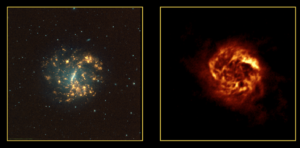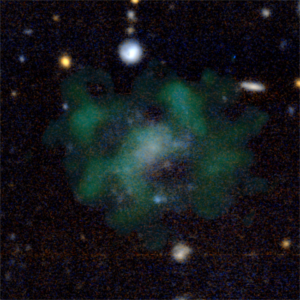NEUTRAL GAS IN LOCAL GALAXIES
Erwin de Blok, Betsey Adams, Tom Oosterloo
Galaxies need a supply of gas to be able to sustain their star formation rates over a Hubble time. It is thought that this gas is accreted from the intergalactic medium, as also supported by cosmological simulations. Direct and unambiguous evidence for this is still missing however as this accreting gas is expected to have a low column density about two orders of magnitude below values typically found in galaxy disks.
We are leading a large project with MeerKAT in South Africa to obtain ultra-deep HI observations of a sample of nearby galaxies in order to directly detect this accreting gas.This project, MHONGOOSE, is also supported by an ERC Advanced Grant “MeerGas” led by de Blok.
The MeerKAT data are not only used to try and detect accretion, but the high sensitivity of MeerKAT also allows for imaging the target galaxies at spatial resolutions of a few arcseconds enabling a direct study of sub-kpc HI complexes and direct comparisons with e.g. ALMA observations.
The transport and processing of the large amounts of MeerKAT data also makes for a practical use-case for SKA1-MID data within the context of a science data center, with MeerKAT being the core of the future SKA1-MID instrument.

NEUTRAL GAS IN DWARF GALAXIES
People involved: Betsey Adams, Tom Oosterloo
Dwarf galaxies are important testbeds for galaxy formation and cosmology. With their small sizes and low gravitational potential wells, they are extremely susceptible to feedback and disruption. Discrepancies between observations of dwarf galaxies and predictions from simulations have been used to test our cosmological model, including the nature of dark matter, and as motivation to improve simulations. The neutral gas (HI) content is an especially powerful tracer as dwarf galaxies can have very faint stellar components but large gas reservoirs. In particular, more isolated dwarf galaxies in the field are more likely to be gas-rich, identifying galaxies that have not been impacted by their environment near a more massive galaxy. HI is measured as a spectral line at 21cm, meaning the measurement also provides information on the motions of the gas. Resolved HI rotation curves can be used to measure the shape of the underlying dark matter halo, which provides critical constraints on the comparison between simulations and observations.
HI observations of ultra-diffuse galaxies, notable for their extended size and low surface brightness nature, exemplify this. Observations with a single-dish telescope identified a gas-rich population of these galaxies in the field, whereas their stellar component was too faint to be robustly detected in optical surveys. Further studies with interferometers resolved their HI and derived rotational velocities show that these galaxies have much less dark matter content than naively expected. At ASTRON, we are leading a survey for HI gas in dwarf galaxies with the APERTIF front-ends on the Westerbork Radio Telescope. One of our principal aims is to test dark matter and galaxy formation models in the lowest-mass dwarf galaxies.

STAR FORMATION AND AGN ACTIVITY AT HIGH REDSHIFT
People involved: John McKean
Molecular gas is important for fueling star formation within galaxies and feeding the central black hole in active galaxies. However, resolving the gas content of galaxies at high redshift is challenging due to the limited angular resolution of even our most powerful telescopes. To overcome this, at ASTRON, we are using gravitational lensing to "super-resolve" the distribution of the stars from their optical and infrared emission (with the HST/JWST and VLT/E-ELT), the obscured star-formation from the heated dust (with ALMA/NOEMA) and synchrotron emission (LOFAR/WSRT/VLA) from galaxies at cosmic noon. Also, through resolving the molecular gas, we are aiming to spatially image the star-formation conditions (gas temperatures and densities) and kinematics within the galaxies. We use these results to test models for galaxy formation and their evolution